Harvey Houses: The Southwest Legacy of Fred Harvey (Who?)
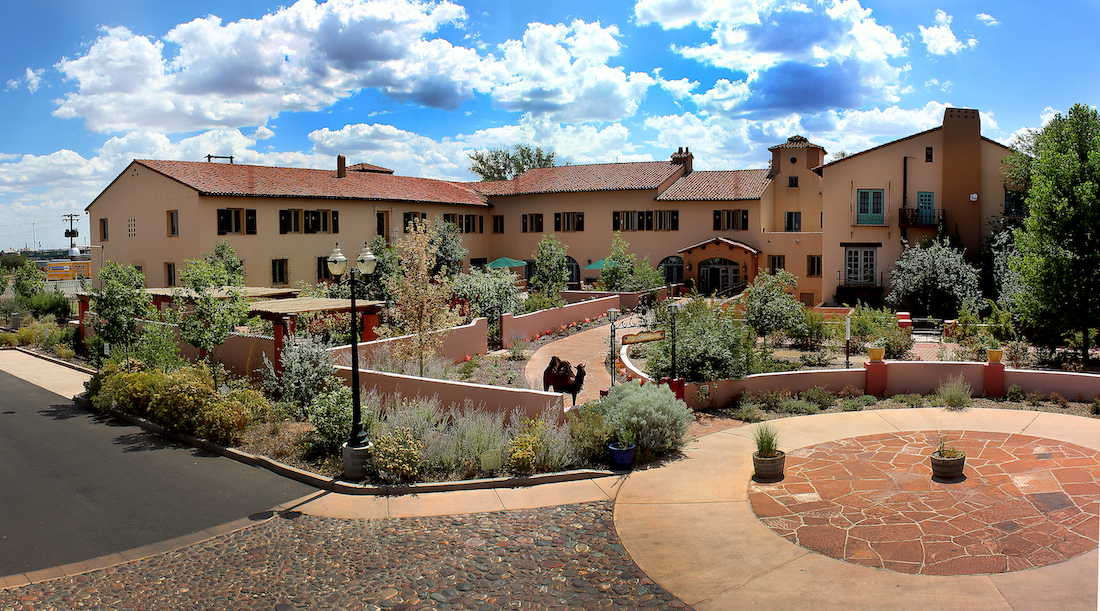
Every year my wife, Merry, and I drive Interstate 40 from Southern California to New Mexico. The route is scenic, but the Arizona part has long stretches of nothing but miles and miles of miles and miles.
I always think of a favorite cartoon: An automobile is starting a trip across a dull, featureless desert, and a road sign says:
Your Own Tedious Thoughts
Next 200 Miles
On the drive there’s one bright spot, though, to relieve the drone of your own tires on blacktop. It lies hidden off the interstate on historic Route 66 in Winslow, Arizona, the dusty desert town where the Eagles famously sang about standing on a corner and being eyeballed by a girl in a flatbed Ford.
This highlight is a historic hotel, La Posada, that opened in 1930. It was designed by pioneering architect Mary Jane Colter to resemble a sprawling Spanish hacienda surrounded by courtyards and gardens. The interior she created was all graceful arches, hand-painted ceiling beams, and authentic Southwestern and Native American décor. Guests arrived on the Santa Fe Railway, whose tracks were right behind the hotel.
Merry and I always stop at La Posada for an excellent lunch in the Turquoise Room. Our usual: Half-and-half soup, made with black beans and cream of corn, topped with the restaurant’s initials spelled out in chile cream.
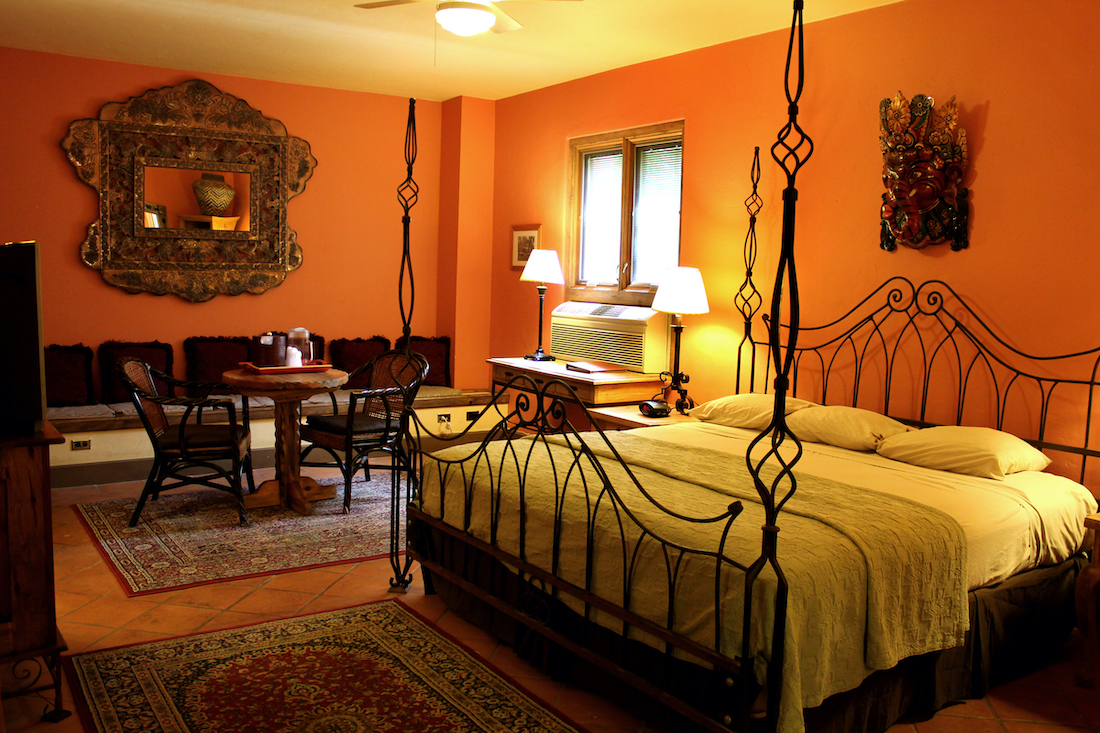
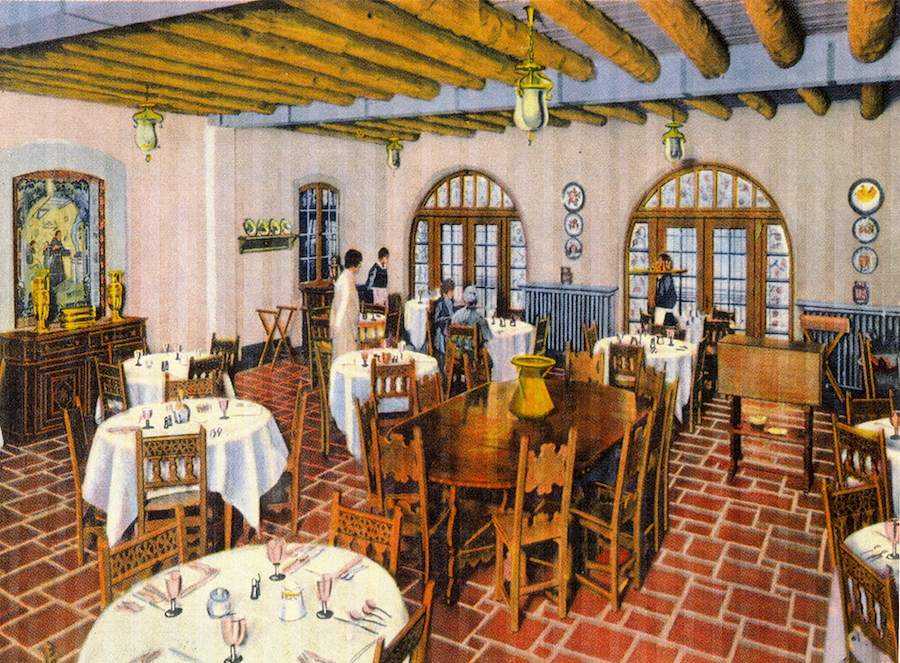
We also savor the hotel’s unique place in western history as a rare survivor among the great trackside hotels built by Fred Harvey. In the mid-1800s this English immigrant allied himself with one of the nation’s largest railroads, the Atchison, Topeka and Santa Fe, to offer both gracious lodging and fine cuisine in the middle of nowhere.
After humble beginnings as a New York City dishwasher, Harvey worked on trains and personally experienced the culinary affronts that beset travelers at stations along the way. Meals were questionable at best and often deliberately served late, so by the time passengers sat down to eat, it was time to get back on board. The staff would then scrape the food off the plates and serve it to the next group of unsuspecting passengers (!).
People joked that when a train pulled out of the station, the flies would wire ahead and alert their cousins at the next stop.
Fred Harvey set out to change all that. He was determined to serve meals that rivaled the finest restaurants in London and New York, and to introduce silver and fine china, European linens, crystal stemware, and impeccable service to rail travel.
His first restaurant was in a renovated fleabag hotel in Florence, Kansas, a town so small it’s said the population doubled when the Santa Fe train pulled in. To run the kitchen, in 1878 Harvey hired away the English chef from Chicago’s renowned Palmer House. Historian Lucius Beebe observed that Harvey “made the desert bloom with vintage claret and quail in aspic.”
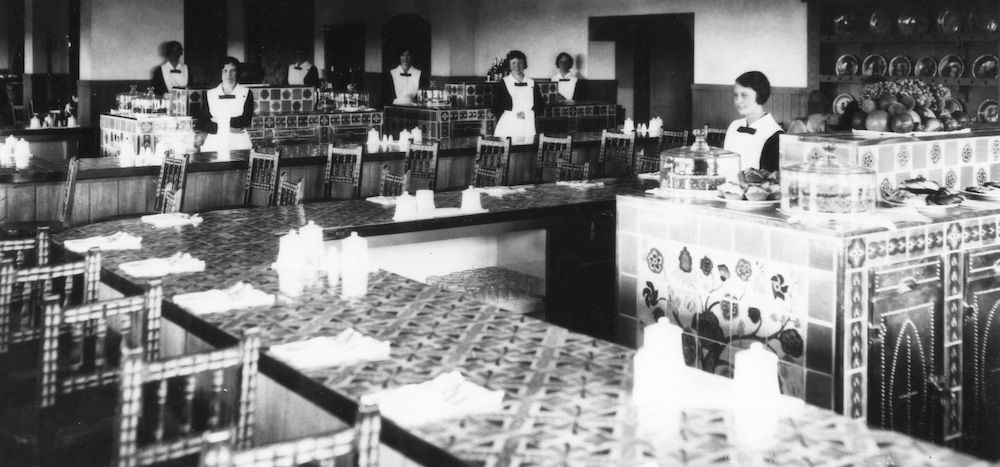
His elevated standards of quality became known as the Fred Harvey Way. As his enterprises expanded, Harvey revolutionized hospitality in the West and became the founding father of the American service industry. His company eventually ran 100 eating houses and 25 hotels between Chicago and Los Angeles, creating the first national restaurant and hotel chains. He was Ray Kroc before McDonald’s and Conrad Hilton before Hilton Hotels, observes his biographer Stephen Fried. On top of that, Harvey’s take-out coffee stands predated Starbucks by nearly a century.
To achieve all this, he learned to innovate from the get-go. In the truly wild West of those days, violence was common, and after a midnight brawl between roughneck cowboys and the waiters at the Harvey House in Raton, New Mexico, in 1883, Harvey took steps. On the advice of his local manager, he replaced all the male waiters with young women. The idea worked so well that he decided to adopt it at all Harvey Houses.
He ran newspaper advertisements across the Midwest and East Coast seeking single young women with “good moral character, attractive and intelligent” to waitress in his eating houses along the railway route. And so was born a historic innovation – the Harvey Girls.
In that era there were no real career options for young women outside of teaching, so thousands of them jumped at the chance for adventure out West in a supervised situation that protected their reputations. The young women lived next to a Harvey House, chaperoned by a dorm mother and under a 10 p.m. curfew so as not to be mistaken for the local prostitutes. Harvey had noticed that some waitresses quickly married locals, so he required new hires to sign a contract agreeing not to wed for six months.
The well-trained Harvey Girls learned to work long shifts with a genuine smile, no matter what they faced. Each was issued a clean starched dress and apron each day, and if it got even a small spot on it, she was required to change.
Harvey was so devoted to efficiency that he invented a coffee-cup code to speed up service. One girl would ask for a patron’s beverage preference, then turn his cup handle to a certain position to cue the server, who could now pour coffee or tea at top speed.
Numbering 100,000 employees over the years, Harvey Girls made up the nation’s first national corps of independent women who were able to travel and earn their own living.
In the end, many of the young women never returned home. As humorist Will Rogers quipped, Fred Harvey “kept the West in food and wives.” Some 20,000 Harvey Girls found mates, settled in remote towns, and created families. They were true pioneers, and Harvey felt they civilized the West.
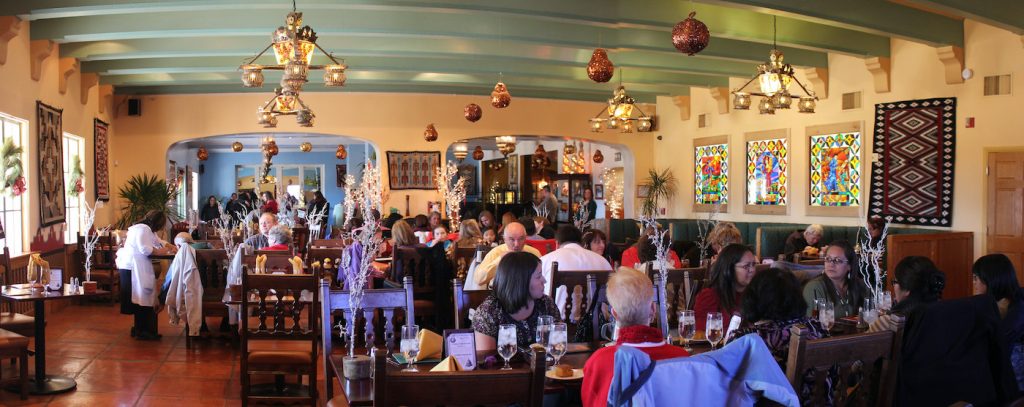
“The Crown Jewel” of Harvey’s empire was La Posada. Its construction cost $2 million (about $40 million in today’s dollars), giving Mary Jane Colter the means to realize her vision of red clay tile roofs above massive stucco walls, with shady courtyards and acres of gardens, and custom furniture and decorative wrought ironwork throughout. Guests ranged from Albert Einstein and President Truman to Hollywood stars and the crown prince of Japan.
In the end, sadly, declining rail travel and the rise of the automobile put the trackside hotel out of business. By the time entrepreneur Allan Affeldt bought the 80,000-square-foot building and 20 acres of land from the Santa Fe railway in 1993, it had been abandoned for decades. He and his wife, artist Tina Mion, slowly restored La Posada to reflect its former glory.
In Fred Harvey tradition, the owners partnered with an English chef, John Sharpe, to offer gourmet Southwestern fare in the Turquoise Room. Sharpe received two James Beard nominations, and although he retired in 2020, the whole team stayed on to keep serving unexpectedly fine meals in a little railroad town in the “middle of nowhere.”
Passenger trains still stop behind the hotel twice a day, heading east and west. Fred Harvey’s legacy – splendid food and comfortable lodging along the rail routes of the West – lives on.





